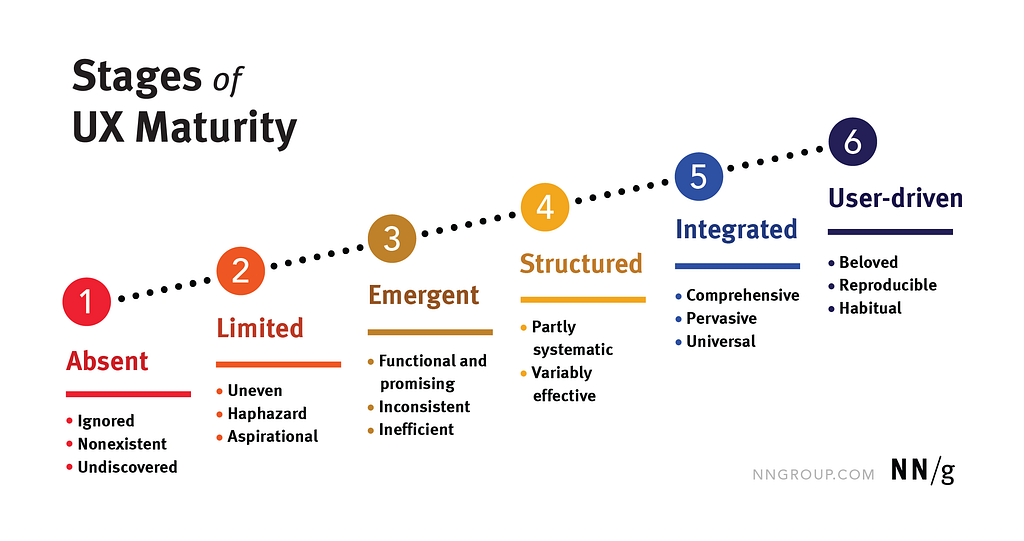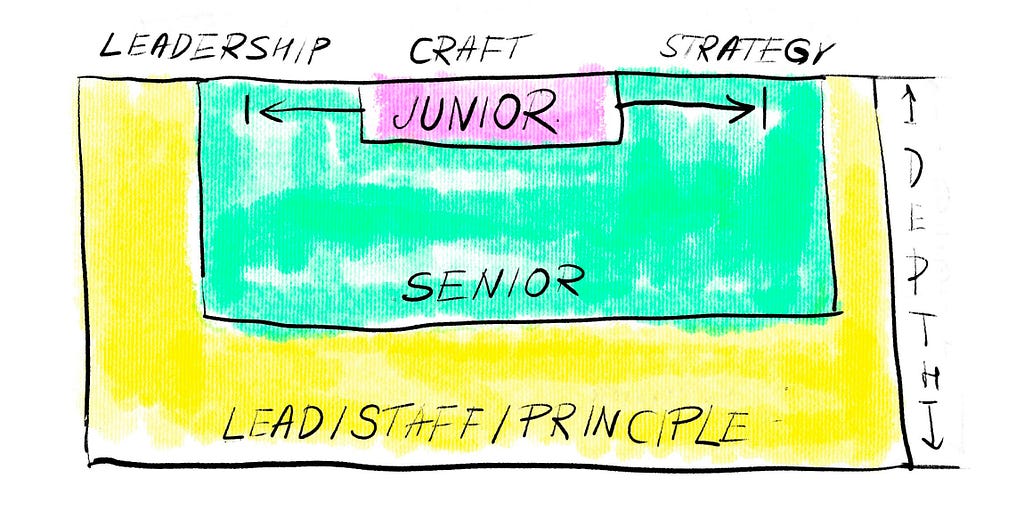Why and how should we all help juniors with entering the industry?

Many things have been said about the enormous changes that happened in the tech industry over the past two years. The so-called “tech winter” has brought mass layoffs and hiring freezes, making the job search challenging even for professionals with extensive networks and numerous accomplishments.
Although many state that this recession isn’t the worst in history and the market is slowly recovering, the future remains uncertain for the folks who are looking to enter the Product Design industry.
The significant technological shifts brought about by the generative AI revolution complicate matters further.
Unlike during previous crises like the Dot-com bubble burst, now predicting when the market will become junior-friendly again is hard.
One thing is certain: dismissing this as a typical crisis, and expecting everything to return to normal, is not an option.
In this article, I suggest we take a deeper look into the current state of the junior job market and discuss how the UX community should address these challenges.
Why currently are there fewer junior jobs?
In addition to economic and technological factors, many attribute the current challenges to the proliferation of bootcamps that prioritise the number of students over the quality of education they receive. Additional factors include the over-hiring that occurred during the post-pandemic boom and the shift to remote work.
While these points are valid, another significant issue often overlooked is the Design Leadership crisis that followed the mass layoffs.
Many companies have made design manager roles redundant, leaving fewer experienced professionals available to assess early talent and support the growth of junior designers.
Moreover, layoffs have forced many designers to accept downgraded roles, with some mid-weight designers moving back into junior positions.
This further exacerbates the difficulties for newcomers trying to break into the industry.
A closer look at the modern junior job market
Traditionally, junior designers have been hired primarily by two types of organisations: design-mature companies and agencies, and low-budget freelance clients. The first ones understand the importance of junior roles and are equipped to provide proper guidance and development, while low-budget clients often seek affordable design solutions.
In contrast, junior designers were rarely hired by low-maturity teams and high-budget clients. Low-maturity teams often lack a solid framework for designer levels and career progression, while high-budget clients can afford to work with experienced freelancers or established studios.

Where did the juniors lose the most opportunities?
AI has primarily taken the jobs of juniors who were working for the above-mentioned low-budget clients who didn’t care much about quality and saw juniors as cheap labour.
Now, outsourcing design overseas or using AI to generate some“nice” screens seems to be a better option for them.
Despite being a challenging way to start a career, these opportunities allowed a huge pile of future designers to create a real portfolio and enter the industry.
Now, this option is disappearing, which who knows, might even be for the better.
Companies with average or above-average design maturity have laid off some of their design leaders, leaving the remaining ones busier and with less time for coaching juniors.
While some of these companies continue to grow, they are primarily open to hiring for senior roles, and this is likely to be their hiring pattern for some time. This may change in the future, but probably not in the near term.
Who is most likely to start opening junior positions?
The most likely candidates to hire juniors are of course highly design-mature teams and agencies. Despite experiencing mass layoffs, these organisations have managed to preserve their design leadership. Companies like Duolingo and Intercom have even hired and promoted new leaders.
Even in these tough times, their leadership recognises the value of diverse teams and most importantly understands the limitations of AI tools in replacing junior roles.
However, for juniors, securing a position at these companies is exceptionally challenging due to intense competition, which has only grown tougher in recent times.
In summary, the junior market will continue to be challenging, as only teams with the highest design standards and toughest competition are likely to open entry-level roles shortly.
Why should we support juniors now?
No industry has ever benefited from crises affecting junior talent. Entry-level specialists are essential not only for handling foundational tasks but also for bringing fresh perspectives to businesses. Now, more than ever, we need this new outlook on design and products.
Consider how many great talents, potentially more gifted than many existing leaders, are currently stuck at the door, unable to join the UX community and contribute their unique insights.
It’s so bloody unfair, we all have to do something about it…
So how can the community start helping juniors?
Hiring junior specialists is a serious decision for any team, and it isn’t ethical or logical to force companies to do so if they’re facing challenges right now.
However, it’s important to recognise that new technologies have emerged, but we still lack a clear understanding of the role of entry-level designers in this new era.
The community can start by clearly defining the new expectations for entry-level roles and guiding juniors on how to acquire the necessary skills.
Rethinking the role of junior product designer
In the beginning, the industry gatekeepers, like best (design-wise) company design leaders, studio art directors and other influencers should rethink what is required from entry-level specialists.
Currently, I see no updates in junior role descriptions in any publicly available career progression framework.
However, I’m happy to see some progress being made in rethinking the junior role on a high level. For example, in his article, design director David Clancy-Smith suggests
rethinking the role for juniors as Directors of AI Output.
Other authors also agree on the potential future for juniors as individuals who will proactively utilise and guide AI, rather than be replaced by it.
However, to be fair, all designer levels will be “art-directing” AI.
What changes are going to happen especially in the junior roles?
Some possible prediction
Once again, the final decision is up to industry leaders; simple “mortals” like myself can only try to guess. To do so, let’s once again put everything we have on the table:
- There is a hiring freeze, but the best (design-wise) teams and agencies are more likely to onboard juniors soon.
- AI can already cover some design operations and improve their speed.
- There is an overall shift towards multidisciplinary full-stack, end-to-end roles rather than separate roles like Interaction and UI designers.
- The progress of designers becoming more involved in company strategy continues to emerge.
When we input these factors into our non-artificial intellects, the first conclusion we reach is that the scope of junior roles is about to become much broader.
Most likely, future juniors will resemble seniors(or mids) but with less experience.
“Less experienced” seniors, will be a “more adapted species” in the current stage of tech evolution.

How should design education evolve?
Another important aspect of supporting juniors is adapting design education to modern realities.
The education provided by many bootcamps and “outdated” design courses is no longer sufficient for entering the industry.
Most of these programs have prepared designers to work for low-budget clients who no longer need entry-level specialists. To help juniors adapt and become “inexperienced seniors,” the new education should expand the list of necessary skills.
What should be preserved?
Traditional Design Skills: For effective “direction of AI output,” juniors should never abandon traditional learning of visual design, information architecture, and usability. Art direction requires a deep knowledge of the craft to effectively assess and correct the work of artificial assistants.
What should be added?
Business Knowledge: Besides practical knowledge of AI for design, juniors should also be taught foundational business concepts. While they don’t need to become big business experts, understanding how design impacts business outcomes is crucial.
Product Thinking: An early introduction to product strategy is essential for junior product designers. Just as a car designer must understand automobile manufacturing, a product designer needs to comprehend digital products from the ground up. This includes knowing what digital products are, how they are created, and most importantly, why they are developed. A thorough understanding of the tech industry is a great advantage for any newcomer and shouldn’t be postponed for later any more.
Fundamental Technical Knowledge: While designers don’t need to become coders, they should understand the technical aspects of their work. Anyway, if some decide to learn coding, it can become a significant advantage, and with AI and zero-coding technologies, this might be achieved more easily now.
Effective Communication: Juniors should learn more how to present and articulate their solutions. Knowledge of business, product strategy, and technology can greatly enhance their communication skills, but they also have to become experts in various storytelling techniques.
Job Search, Interviewing, and Networking: Tough competition is here to stay, and even great designers need to improve their skills in preparing applications, mastering interviews, researching companies, and expanding their professional networks. Now, these skills should be taught from the beginning.
Additionally, it would be beneficial to practically prepare designers to work in an agile environment and build solid relationships with colleagues. This will ensure newcomers can start working effectively and gain experience as they go, opening many doors for “inexperienced seniors”.
Advice to juniors
I don’t know when design leaders will provide a clear list of new requirements or when updated courses will come to market, but I have a feeling it may happen soon. However, don’t wait for anyone.
Learn all the above-mentioned skills and try to showcase them in your initial portfolio.
High-maturity teams and agencies are more likely to post junior jobs soon. Target them, attend their events, network with them, and use platforms like ADP List and Meander to book mentoring sessions with designers from those teams.
And remember, as the famous quote says, “Hard times create strong men (and women).” Once you become an inexperienced senior, break the ice and enter the industry, you will rapidly grow into a remarkable expert who learns and progresses faster than many others, bringing countless new prospects to the future of product design.
Good luck!
Articles and resources
- Tech winter? How cold is it really. Article by Resource Solutions
- UX Angst of 2023–24. Article by Jacob Nielsen
- Dotcom Bubble Definition by Investopedia
- Why there will be little junior UX jobs for a while. Article by Melody Koh for Prototypr
- UK’s post-lockdown hiring boom hits record pace — REC. Report by Reuters
- The big design freak-out: A generation of design leaders grapple with their future. Article by Fast Company
- The 6 Levels of UX Maturity. Article by NN Group
- Duolingo promotes Ryan Sims to be its first chief design officer. News article by Campaign
- Let’s give junior product designers a chance. Article by Neil Turner for UX Collective
- The Future Role of Junior Designers: Navigating Potential AI Displacement. Article by David Clancy-Smith
- The future of UI/UX and AI for designers. Article by Re:coded
- AI for Designers. IDF Course by Ioana Teleanu
- Business Thinking for Designers. Book by Ryan Rumsey
The future of junior designer’s role was originally published in UX Planet on Medium, where people are continuing the conversation by highlighting and responding to this story.